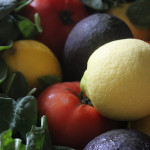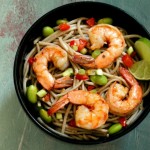I’m not rushing winter but it could be time to start thinking about the types of foods you want to include in your diet as the weather changes. I love the fresh simplicity of summer foods but I also enjoy spending more time in the kitchen during the fall and winter and I’m a big fan of soups and stews.
The following is from eatingwell.com. I really like this site because they offer good information without all the hype.
1. Pomegranates
2. Dark Leafy Greens
Dark leafy greens, such as kale, chard and collards, thrive in the chill of winter when the rest of the produce section looks bleak. In fact, a frost can take away the bitterness of kale. These greens are particularly rich in vitamins A, C and K. Collards, mustard greens and escarole are also excellent sources of folate, important for women of childbearing age.
3. Citrus
Citrus fruits, including lemons, limes, oranges and grapefruit, are at their juiciest in the wintertime and can add sunshine to the dreary winter. Citrus fruits are loaded with vitamin C—one medium orange delivers more than 100 percent of your daily dose. As Karen Ansel, M.S., R.D., writes in the January/February 2012 issue of EatingWell Magazine, citrus fruits are also rich sources of flavonoids. The predominant flavonoid in these fruits—hesperidin—is credited with boosting “good” HDL cholesterol and lowering “bad” LDL cholesterol and triglycerides.
5. Winter Squash
There are many varieties of winter squash—including butternut, acorn, delicata and spaghetti squash—and they are all excellent choices in the winter. One cup of cooked winter squash has few calories (around 80) but is high in both vitamin A (214 percent of the recommended daily value) and vitamin C (33 percent), as well as being a good source of vitamins B6 and K, potassium and folate.










2 Comments
Linda Primmer
September 5, 2013 at 3:34 amHi Robyn, such wonderful foods for the upcoming winter months. I hope to slowly add them to my diet. I have been lucky enough to enjoy the potatoes. Be well my sweet friend. xoxo Linda
Mindy Whipple
September 7, 2013 at 5:56 pmI love, love, love homeade soups in the winter and look forward to some yummy recipes from you! Great information, as always friend.